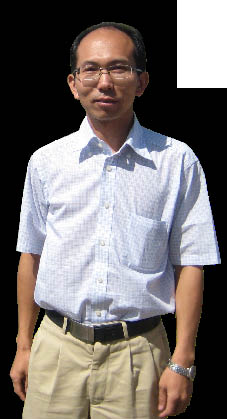By HU JIANGYUN
China Accelerates Transformation of Its Economic Development Model
SINGAPORE, China’s Hong Kong, China’s Taiwan and South Korea all achieved miraculous economic development as early as the 1970s. These so-called “Four Little Dragons” rapidly became high-income economies with significantly improved living standards. Since the 1990s, however, Asian developing countries such as China have experienced faster, more conspicuous economic growth than any other region in the world.
How have these Asian developing economies achieved such progress? From the practical perspective, all have expanded their scale of opening-up and proactively advanced the industries that developed countries have transferred to them. By absorbing foreign direct investment and conducting external trade, they combine local labor, land and other resources with international capital, technology and innovation. This optimized allocation of resources has greatly increased efficiency, thus realizing economic growth and social development.
The international financial crisis caused an obvious slowdown in the socio-economic development of certain countries and regions. The U.S., the EU and Japan, for example, all experienced shrinking demand and feeble economic development. Asian developing economies as represented by China, meanwhile, have displayed a strong momentum of stable economic growth. Economists, therefore, have shifted their focus to these Asian economies, by virtue of in-depth theoretical discussions of their economic growth and social development.

Some economists and scholars utilize Western economic theories, especially those relating to economic growth, to explain and explore China and other Asian developing countries’ phenomenal economic expansion. They include the Solow Growth Model and Total Factor Productivity (TFP). Certain pundits analyze the indicators of Chinese economic growth and expound on the driving force behind it according to relevant statistics. But Western economic theories entail many assumed conditions that do not apply to China’s reality.
First of all, the socialist market economy that China is building and improving does not equate to a textbook market economy. Neither, in fact, do those of the U.S., Germany, Japan or the U.K., all of which show variances. China officially committed to building the socialist market economy in 1992, at the 14th National Congress of the Communist Party of China (CPC). China’s economic mode, therefore, has a history of little more than 20 years. No market economy can stand equal to the theoretical model because it is impossible for all factors to flow freely. Even if it were, costs would still be payable. Countries around the world that have brought the market economy into effect have proceeded from their respective histories, cultures, religions and social characteristics when applying it to local conditions. This is why it is so difficult to pinpoint two countries that operate exactly the same market economy. That in force in China, for instance, still bears the vestiges of the original planned economy.Intervening
administrative measures of macro-economic management have brought about a market economic order that has yet to attain the Western epitome. This is because the construction and improvement of the Chinese market economy accords with China’s actual conditions, and will thus improve the welfare of Chinese society as a whole. From this perspective, using Western economic theories to explain China’s development is problematic.
Second, as a big developing country with a huge population, China has a high savings rate. A huge population and diversified economic development give rise to the scale effect of economics; to the effect of division of labor that Adam Smith, father of economics, raised in An Inquiry into the Nature and Causes of the Wealth of Nations; and to the structure effect of institutional economics. People constitute the most energetic element of economic activity. They not only organically combine land, capital, water, electricity and raw materials, but also possess creativity and the ability to learn. Different combinations lead to different levels of efficiency and results. Liberation of the people, therefore, is the driving force behind China’s socio-economic development. Once inspired, people’s talent, potential, and in particular, creativity, can create miracles. China’s 1.3 billion or more population includes knowledgeable scientists and technicians, skilled workers and ordinary laborers, as well as innovative and pioneering entrepreneurs and professional managers. They provide abundant and diversified labor resources – those under
- Are You Ready to Perform?
- Beijing’s Green Courtyard
- China’s CSR on the Global Market Fast Track – An Interview with Xu Zongxiang, vice president of China South Locomotive & Rolling Stock Corporation Limited (CSR)
- China’s Changing Development Pattern
- China Accelerates Transformation of Its Economic Development Model
Services
Economy
- Are You Ready to Perform?
- Beijing’s Green Courtyard
- China’s CSR on the Global Market Fast Track – An Interview with Xu Zongxiang, vice president of China South Locomotive & Rolling Stock Corporation Limited (CSR)
- China’s Changing Development Pattern
- China Accelerates Transformation of Its Economic Development Model
